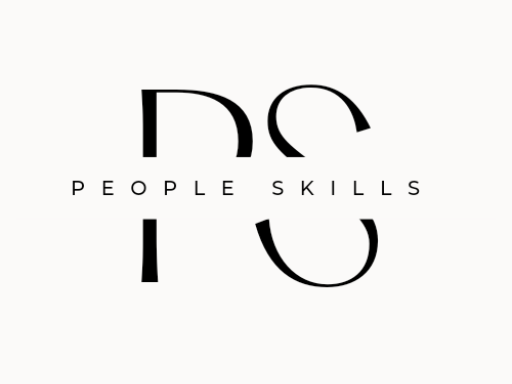Leaders with the best results don’t rely on a single leadership style. Instead, they demonstrate several of them, based on each particular situation.
My favorite categorization of leadership styles is the 6 styles defined by Daniel Goleman, Richard Boyatzis, and Annie McKee in their book: “Primal Leadership.”. 4 of these are positively impacting the work climate and 2 have a rather negative effect. Nonetheless, they do have their role in a leader’s arsenal. Besides these well establishes styles we will examine a new emerging style: Mindful Leadership Style.
Using these leadership styles, leaders have the power to create a work climate that allows people to be their best and perform at high levels. Knowing all styles allows leaders to be more flexible and change between them as the situations require, to get the best results.
Let’s dive into the leadership styles, understand their characteristics, and their impact on the team and the overall results.

Authoritarian / Visionary
The Visionary Leader has a forward-looking attitude, focusing on what needs to be done today, instead of what we did yesterday. Focused on what’s to come, the leader will work towards inspiring people to act, showing enthusiasm and strategic planning capabilities.
Goals will be set while allowing for innovation and creativity in how the team will achieve those goals. This style is heavily relying on a mature team, made of experts, that will be able to deliver results. The increased level of flexibility of this style is positively pressing the Autonomy (SCARF) button of team members and is also acting as a motivation factor.
Feedback will be given often and bluntly, specifying both the positives and the negatives. This way the team will always know if they are on the right path and will better understand their role and contribution towards the company goals.
The Visionary Leadership Style will deliver excellent results if the team is mature and well-established. Although, if the team members’ expertise exceeds the leaders’ knowledge, the leader will not be able to inspire trust and confidence that the goals are indeed achievable.
Coaching
When adopting the Coaching style, the leader uses active listening skills and offers guidance to team members. Helps them identify their strengths and weaknesses, thus encouraging development and achieving long-term growth objectives.
Besides working on development plans, offering guidance and constant feedback, the Coaching leader is highly effective at delegating. Will delegate tasks even if this means that there will be a delay in finalizing activities within the deadlines. Will take responsibility for compromising short-term wins in exchange for long-term success. Makes sure people learn and understand what they are doing, not just perform activities based on a standard procedure. The balance between effort and obtained results will turn in the leaders’ favor over time.

Although highly effective, this style is the least used one, mostly due to the lack of time, needed at the beginning of the coaching process. Over time, using this style has a positive impact on work climate and employee
motivation. People will feel and work more autonomously and will be the masters of their activities. According to Daniel Pink, Autonomy and Mastery are key motivating factors in the modern workplace.
This style works best with emotionally mature teams, already focused
on growth and aware of their strengths and weaknesses. If people want to be coached, this style will work wonders. On the other hand, if team members are not focused on growth, this style will not get you anywhere. You cannot force development, one has to be willing to accept its shortcomings and be eager to improve.
Affiliative
When this style is applied, it positively impacts communication because people who like each other speak to each other more often and more freely.
The Affiliative leader allows increased flexibility and has great trust
in people, giving them the freedom to perform their tasks the way they
believe it’s necessary. This enables the feeling of Autonomy in one’s work and is a positive motivating factor.
While working with a leader that uses this style, people experience the feeling of belonging. This style is appropriate for creating harmony within the team, increasing morale & engagement, and starting conversations, but it will not work on its own and it is recommended to be used together with some other leadership styles (for example the visionary).
The downside of the Affiliative leadership style is that people might understand that being average is acceptable, and might lead to low-performing teams. Because the leader wants to keep everyone happy and rarely offers constructive feedback, team members are left to figure out on their own how to get better in situations where clear guidance is needed. The team is left without direction.
Democratic
A Democratic leader is easily recognizable because it likes to organize “All Hands” meetings, gather people, explain details, ask for group ideas & input, and listen to all opinions. Through these acts, the leader builds trust, respect, and a sense of contribution to overall team results.
By being open to discussions and inputs, the democratic leader learns what is working and what isn’t working within the group. People feel consulted, part of the process, and the big picture. The increased sense of contribution is driving ownership of objectives and buy-in. People being included in decision-making is positively pressing the Status button of the SCARF Model (read more on this model here).
The downside of the Democratic leadership style is that meetings might get endlessly long, with everybody wanting to contribute and share opinions. Instead of clarifying, it might lead to ambiguity and lack of consensus. Also, the style will not work if a decision needs to be made quickly. Not the best style to be used in crises.
Leaders are encouraged to put on the Democratic hat when they are not sure about the direction themselves and they need ideas and suggestions. The pre-requisite is that the team is mature and experienced and can offer added value via its contribution.
Pacesetter / Promoter
The Pacesetter Leader demonstrates and sets high standards for the team. The leader acts like an example, leads by example, is preoccupied with getting things done fast, and has the same expectations from the team.
Low performers are quickly identified and the same high expectations are also set for them. Team members who cannot comply, will be replaced.
More often than not, this style is counterproductive and has the potential of ruining and negatively impacting work climate. Team members feel overwhelmed, they cannot keep up with the pace and quickly get demotivated. Standards and expectations might be very clear for the
leader but they need to make sure that the team has the same understanding.
This leader thinks in terms of “If I need to tell you what to do, you are not
the right person for this job”. The job shifts from doing everything you can and work towards goals/ objectives/standards to rather trying to guess what the leader really wants.
The leader might not fully trust the team to work on their own and innovate in their line of work. Flexibility is reduced and work can become a routine task. No feedback is given on the progress and contribution and motivation decreases. In Daniel Pink’s term, there is no sense of autonomy or mastery.
This kind of leadership style can be observed when high performers have been promoted as team leaders. They might turn into a micromanagers, obsessed with details and starting to do other peoples jobs.
This style works best when the entire team is intrinsically motivated and needs low levels of external guidance or coordination. Has great results in mature and highly qualified expert teams, like lawyers or in the field of research & development.
Coercive / Commanding
Of all the leadership styles, whenever a leader find itself in a crises situation, the Coercing / Commanding is the one that will produce result in the short / mid term. When tough decisions are to be made, there is no space for flexibility or innovation.
If used excessively, high performers, who are motivated not just by money, will lose interest and work satisfaction.
Extra: Mindful Leadership
The Leadership role has evolved, and today, the leader’s Job Description includes new requirements, like prioritizing, being present, resilience, being self-aware, and mental and physical well-being. With the evolution of traditional office setting to a new hybrid/remote work, digitalization and innovation is part of day-to-day life. Leaders must also evolve and keep up with these trends.
While the traditional leader is an expert on strategic planning, the Mindful Leader relies on intuition in the workplace, while fostering collaboration, creativity, and building resilience. Diversity and inclusion are part of everyday life and need constant and conscious attention.
The Mindful Leader can remain calm under pressure and don’t overreact. This is a skill that can be learned, it just takes a lot o exercise and self-control.
Taking a step back and looking at the big picture help bring clarity to the decision-making process. The ability to prioritize, and to do it on the go is indisposable. The leader needs to keep a clean and cool head and not let oneself overwhelmed by concurring tasks and requests. Activities need to be prioritized accordingly for both the leader and the team. In combination with the Coaching style, the leader will guide the team to develop the right mindset and learn to prioritize on their own.
Conclusion
The emotionally intelligent leader is self-aware, recognizes its own and other peoples emotions as well. By showing real interest and empathy toward others, the leader will build better relationships, which in turn will drive team cohesion and high performance.
William Cowper said it first: “Variety’s the very spice of life”, and I believe this also applies to Leadership Styles.
Think of the different styles as tools in a toolbox. If you want to get the job done, you will need all the tools and the knowledge to select the most appropriate one to use in each specific situation. Is the hammer a better tool than a screwdriver? Only the situation will tell.
As a leader you need a fully equipped toolbox and the knowledge and intuition to use the right one. Learn by doing, experiment, often reassess and see what works and what doesn’t.
